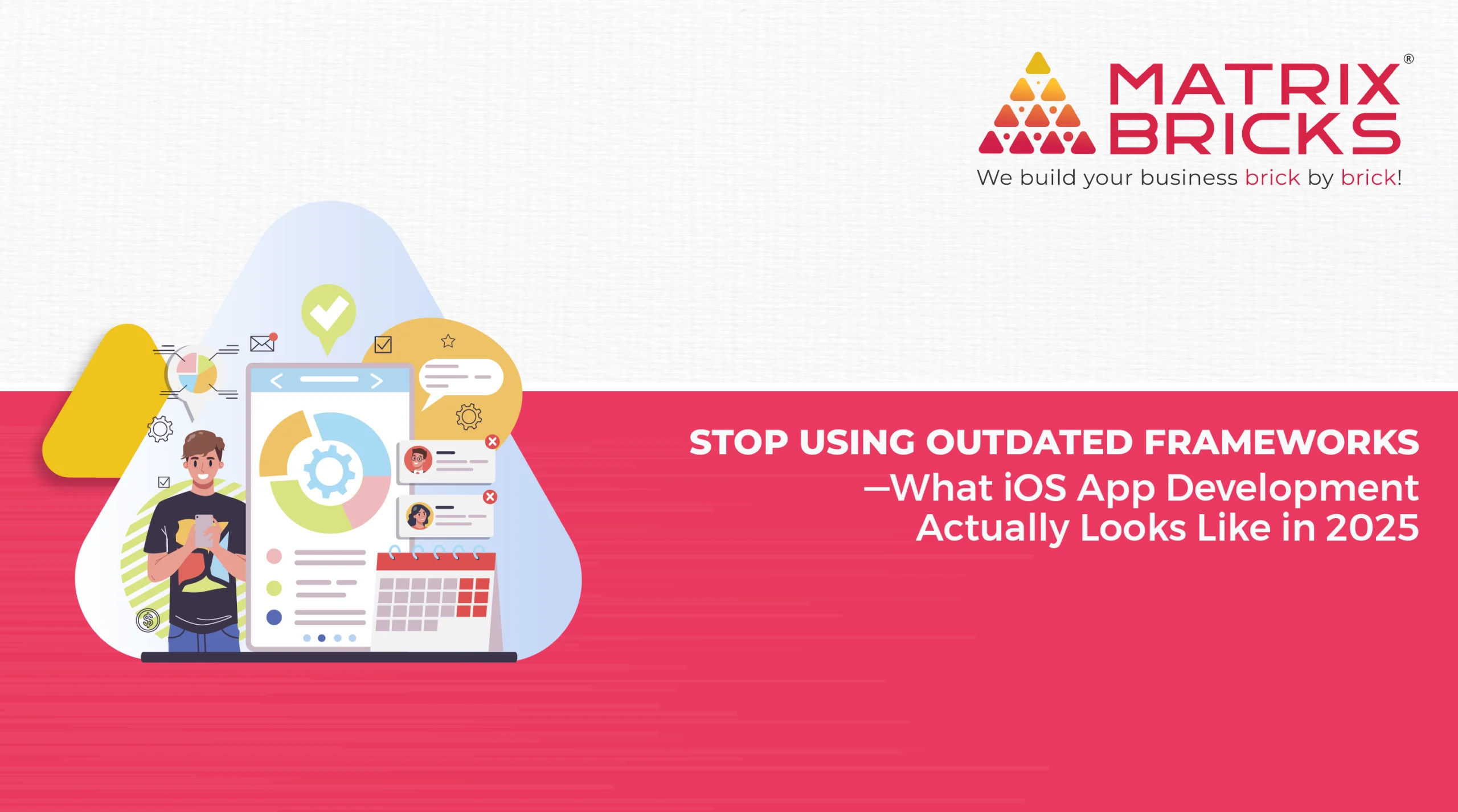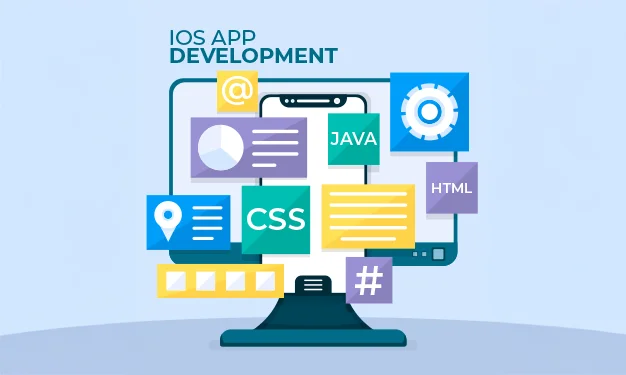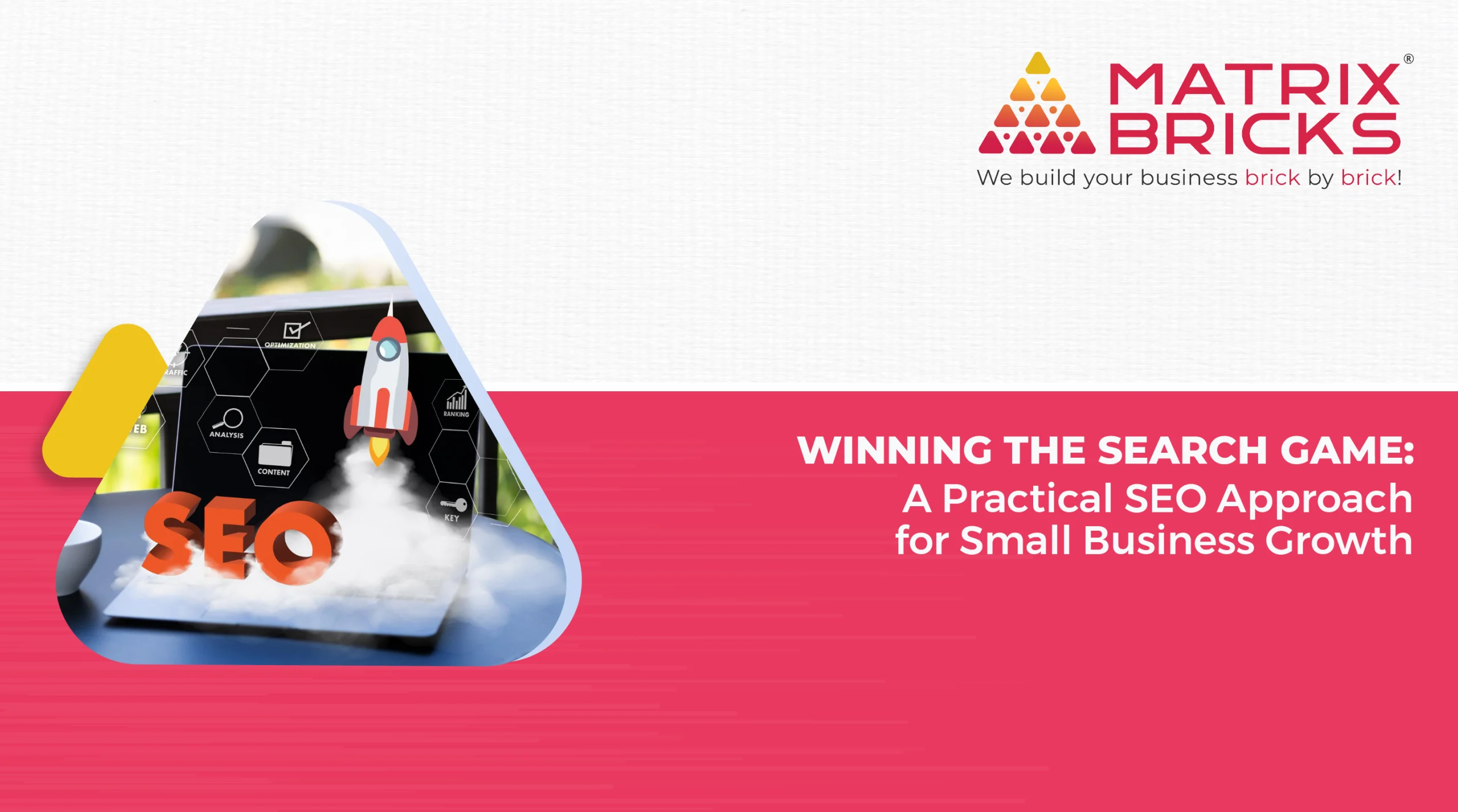
Are you still developing iOS apps like it’s 2017? The mobile landscape has changed dramatically in the past few years, and what once worked might now be holding your app back. With user expectations evolving, competition growing fiercer, and technologies becoming smarter, sticking to outdated frameworks is like using a typewriter in the age of cloud computing.
This blog takes a deep dive into what iOS app development truly looks like in 2025. You’ll discover what’s changed, what matters most now, and how developers are building cutting-edge apps that deliver performance, speed, and delightful user experiences. Whether you’re a developer, a tech entrepreneur, or simply curious, this read will give you clarity and insight into where mobile development stands today.
And yes, we’ll say it upfront: if you’re still clinging to legacy approaches, it’s time to move on.

A New Era of Design Thinking
In 2025, iOS app development is about creating intuitive, emotionally intelligent experiences. Developers today approach app development & optimisation with design-first thinking, focusing deeply on user journeys, micro-interactions, and accessibility from day one.
Users expect more than functionality—they want seamlessness. Everything from swiping to transitions is mapped to feel intuitive and human. App Developers are no longer just builders; they’re user experience architects. Even the tiniest design flaws can now result in users uninstalling apps within seconds.
To thrive in this environment, development teams must work closely with UX researchers, visual designers, and motion experts. Apps are now designed to engage all senses—sight, touch, and even haptic feedback—delivering not just usability but delight.
Want to build something users love? Start thinking beyond code.
The Rise of Modular and Scalable Architecture
Modernisation iOS apps need to scale effortlessly and evolve quickly. In 2025, the foundation of every successful app lies in its architecture—specifically, how modular, adaptable, and future-proof it is.
Modular design allows developers to break down apps into independent, reusable components. These can be tested, maintained, and upgraded individually, dramatically reducing technical debt and speeding up release cycles. This approach supports continuous integration and delivery without the bloat of outdated monolithic structures.
Scalability is another non-negotiable. Your app might start with 100 users—but what if it grows to a million? Frameworks that can’t keep up will crumble under pressure. Today’s development practices focus on building lean, clean codebases that are flexible enough to handle spikes in user demand and future updates without causing breakdowns.
Hyper-Personalisation is the New Standard
The one-size-fits-all approach? It’s long gone. In 2025, users expect apps to understand them. Hyper-personalisation is no longer a luxury—it’s the norm.
Apps are now expected to adapt in real-time based on user preferences, behavior, and context. Whether it’s tailoring the interface, customising notifications, or anticipating next steps, developers are integrating adaptive logic at the very core of their builds.
But what does this mean for developers? It means deeper integration of behavioural data and intuitive response systems. Features such as predictive navigation, context-aware prompts, and dynamic content loading are no longer cutting-edge—they’re expected.
Apps must feel less like tools and more like companions. Building for everyone now means building uniquely for each individual.

Security and Privacy Take Center Stage
In a world where data breaches are front-page news, users are more cautious than ever. App development in 2025 prioritises transparency, protection, and privacy by design.
Developers are embedding privacy at every level—from onboarding flows that clearly state data usage, to permissions that adapt based on user trust. Users expect their data to be guarded not only through encryption but also through ethical design choices.
Security isn’t just a technical feature anymore; it’s a brand statement. Regular audits, real-time threat monitoring, and user-centric privacy settings are now woven into the very fabric of development. When building iOS App Developers are also implementing context-sensitive authentication mechanisms to minimising user friction while maximising protection.
In short, apps built today must respect user data like it’s sacred—because, frankly, it is.
Automation, Testing, and Deployment at the Speed of Thought
Speed matters more than ever. But speed without stability is chaos. That’s why modern iOS app development places massive emphasis on automated testing, continuous deployment, and real-time analytics.
Gone are the days of manual bug checks and lengthy release cycles. Automated tools now handle thousands of test cases in minutes, flagging issues before they reach users. Deployment pipelines have become streamlined, allowing teams to ship features quickly without compromising quality.
Even post-launch, developers don’t rest. Real-time analytics track usage, crash logs, and engagement metrics to guide immediate improvements. Agile is no longer a methodology—it’s a culture. Teams are shipping updates weekly, sometimes daily, based on user needs and usage trends. In 2025, fast is good. Fast and stable? That’s genius.
Final Thoughts: Build Like It’s 2025
So, what does iOS app development in 2025 actually look like? It’s clean, modular, intuitive, user-obsessed, data-aware, and lightning fast. It’s a far cry from the rigid frameworks and one-dimensional thinking of yesteryear.
If you’re still using development practices from five years ago, you’re not just behind—you’re building on borrowed time. Today’s digital experiences demand innovation at every level. Whether you’re just starting out or managing a team of developers, the future of iOS development calls for a blend of creativity, agility, and responsibility.
And remember, innovation isn’t just about flashy features—it’s about solving real user problems in real time, elegantly and efficiently. It’s about crafting experiences that feel less like software and more like magic.
The future is already here. So stop looking back. Build forward.
FAQs
1. Is traditional app development still relevant in 2025?
Only to an extent. While foundational principles remain useful, relying solely on traditional practices can lead to inefficiencies and user dissatisfaction in today’s fast-evolving mobile environment.
2. What’s the biggest difference in iOS app development now compared to five years ago?
The shift from feature-driven development to user-centric, adaptive, and real-time experiences. Also, the emphasis on modularity and continuous delivery has dramatically increased.
3. Are no-code or low-code platforms dominating iOS app development?
They’re gaining traction, especially for MVPs and internal tools, but high-performance consumer-facing apps still benefit from custom development for greater flexibility and scalability.
4. How can developers stay ahead in this changing landscape?
By focusing on user experience, embracing modular architecture, prioritising security, and adopting a culture of continuous learning and testing.
5. How important is performance optimisation today?
Extremely. Users now expect apps to load instantly and respond fluidly. Performance issues lead to drop-offs, so efficient code and responsive design are more critical than ever.




